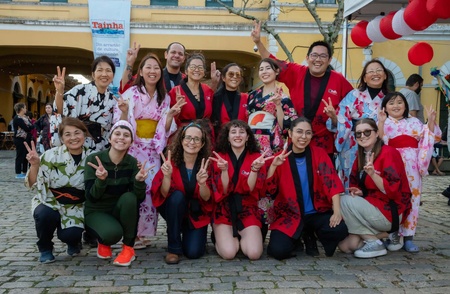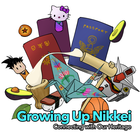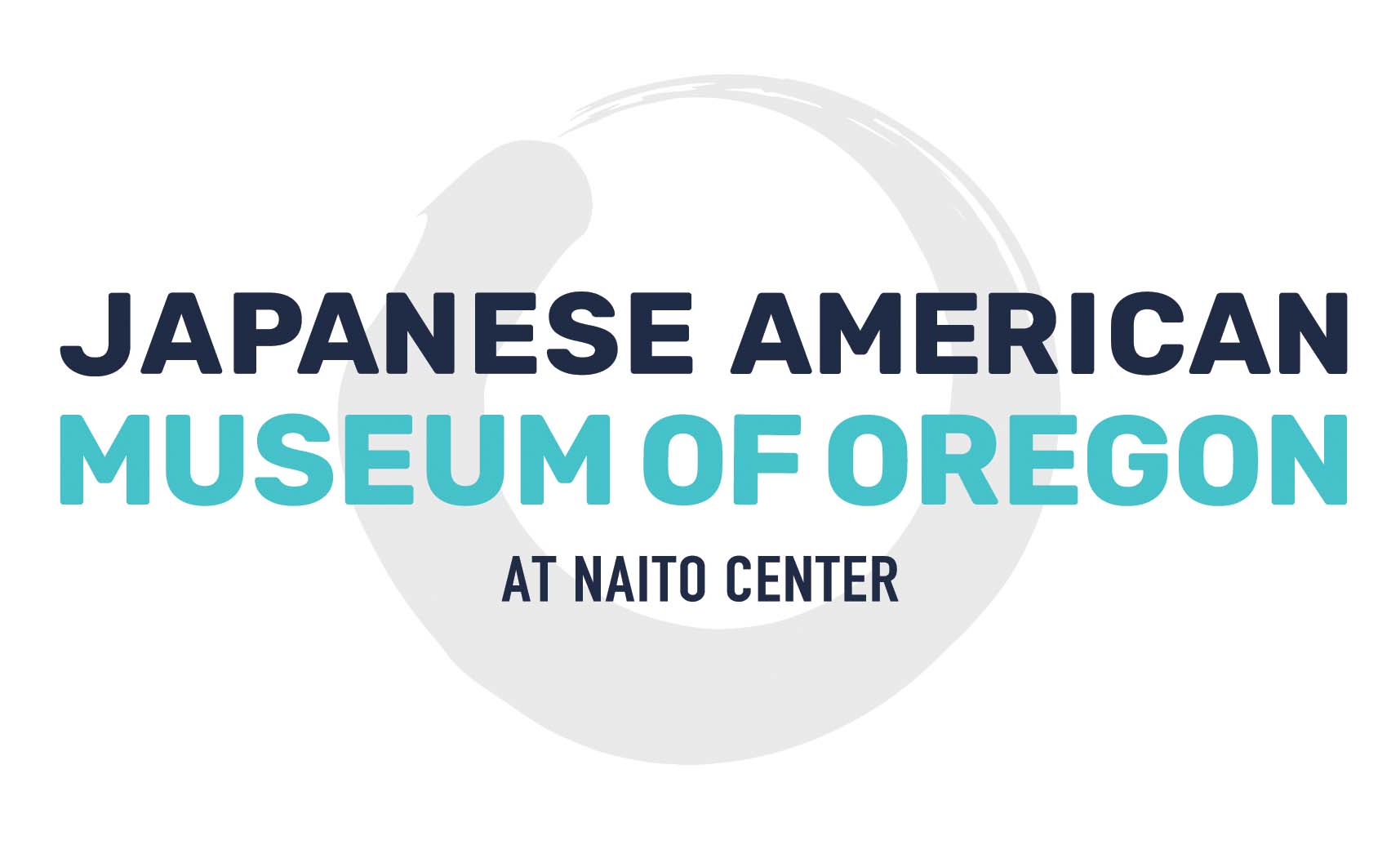Don do kon ko don do kon ko do ko do ko su ko su ko don. The beats of the taiko woke me from the sleep of cultural separation.
Without much awareness of the presence of the Nikkei community in my city, one day, by chance, I heard about an event that was taking place in a square in the center and, casually, I arranged to meet a friend there – little did I know that this would be Tanabata Matsuri that would change everything. I ate takoyaki and taiyaki , bought origami , had fun, but what really marked me was the feeling of my heart beating to the rhythm of the taiko .
Soon after, I ended up going traveling and completely getting out of my routine, meeting loved ones, discovering new places, new flavors and coming back full of stories.…
But when I returned, my mind was on the taiko . Without knowing anyone who could inform me, I asked Google, found the contact for the city group and sent a message. It may not seem like a big deal, but the often loud voices in my head that told me I wasn't Japanese enough or musical enough for this were drowned out by the strong calling I felt. A few days later, on precious Sunday morning time, my mom and I were jumping, squatting, and stretching to begin the first of many workouts.
My closest contact with the Japanese community until then had been during my childhood, through the Botucatuense Association of Japanese Culture. My mother tried hard to get me into and keep me in nihon gakko , while I, so small and full of desire, insisted: “I don't want to learn Japanese, I want to learn English!”
My mother's determination gave me good memories of events such as collective lunches, festivals of the city's nations, music and that undokai that to this day I remember my grandmother telling how she won the egg-and-spoon race when she was a child.
However, despite all the effort, I still felt apart in that environment. These weren't the kids I saw at school every day or the families I knew at home. In the end, the deeply European and white cultural, intellectual, and social influence in which I was immersed was what prevailed.
The distance increased when we moved to the south and immersed ourselves in such a strongly Gaucho context. At the June festival we dressed in prenda and bombacha, drank chimarrão and sang gatherings. I remember once seeing a young Nikkei man on the street thinking: “Wow, what is he doing here?”
After years of separation and isolated attempts at rapprochement in the following years, it was this Tanabata Matsuri that truly inserted me back into the community.
The first taiko training was a bath of information and sweat – I went for the music and left with my monthly gym membership paid for. More than physical exercise, we had so much new to process that it was disconcerting. Names of people, instruments, songs… what is do and what is ko ? But every Sunday the unknown became familiar and the affection of the group dissolved that chronic feeling of not belonging. A few months later, I joined the bon odori and matsuri dance group and met a new part of the community.
After a year, these two groups, Shimadaiko and Ikiru Yorokobi, are a fundamental part of my daily life; I can't imagine my week without the meetings, nor my life without the friendships I've made. In addition to the social aspect, this reunion with the community also revolutionized my outlook on many other aspects of life. The literature I look for, the music I listen to on the bus, the clothes I wear, everything took on a new meaning, along with the rediscovery of the history of immigration, the understanding of my racial identity, the bonds I formed with these people.
At the next Tanabata Matsuri, my participation was completely different from the previous one: instead of finding out by chance, I knew the organization, helped publicize the event, participated in the opening as Princess Orihime, danced bon odori , sold onigiri and the sound of taiko that resonated in my heart was what I was playing myself. During the party, between laughter, hugs, yakisoba and tempurá, I looked into the eyes no longer of strangers, but of friends, belonging, like me, to the same collective.
I continue to be more and more awake and involved with my community, composing a fruitful present and dreaming of a bright future, especially after the opportunity that our kaikan , the Japanese-Santa Catarina Association, provided me: the Revi meeting of seinenkais promoted by Bunkyo, which it awakened in us the desire and strength to create a seinenkai that allows us to reach and bring even more young people together. I am very grateful to everyone, people and entities, who made it possible for a fourth-generation Nikkei to have so many opportunities for social and cultural connection on our beloved Island of Magic.
© 2023 Isabella Ikeda Leite








